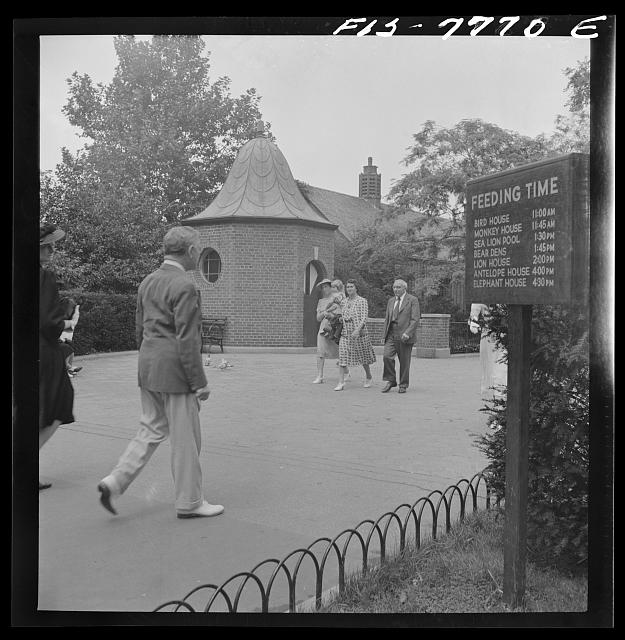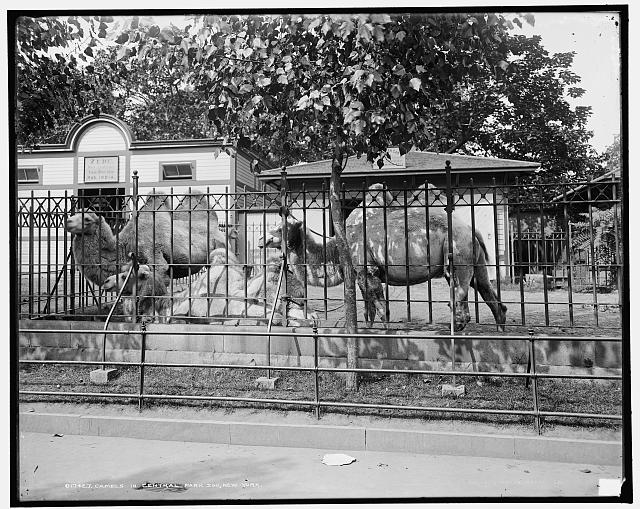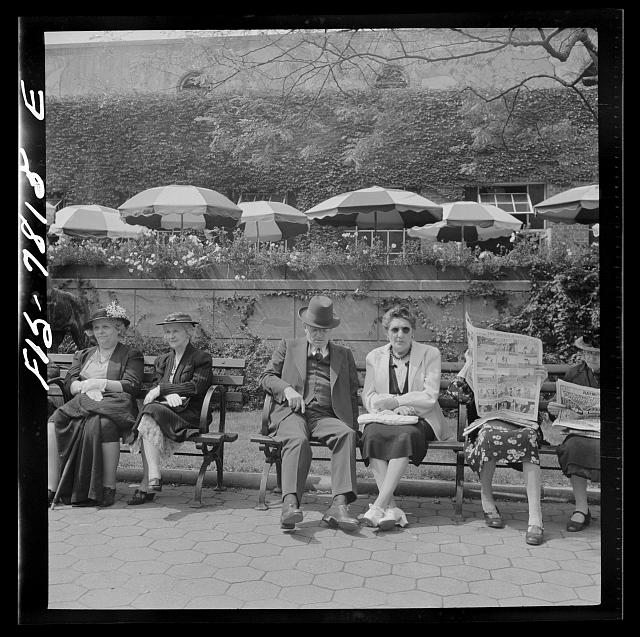 Entrance to Central Park Zoo, 1942. Image via the Library of Congress
Entrance to Central Park Zoo, 1942. Image via the Library of Congress
The city legislature never commissioned for the city to have a zoo in the mid 1800s, nor was it part of the original plan for Central Park. Instead, the Central Park Zoo formed in the 1860s when New Yorkers began donating their unwanted pets to the city, and circuses needed a place to store their animals. From the donation of one black bear cub in 1859 and 72 white swans, a menagerie opened in the park for the public’s enjoyment. The menagerie’s collection of animals continued to grow to include deer, foxes, parrots, and even cows along with others. The collection became a series of small, outdoor, fenced in spaces. In the center of the menagerie, a sea lion pool was added, which although being renovated, exists in the same place today.
Today The New York Times has not only the origin of the Central Park Zoo but also a document which reveals the “curious list of people who donated animals” ranging from powerful men to children with “no ties to power or fame.” We’ve decided to follow up their piece with an installment of vintage photographs from the Central Park Zoo.

Camels in Central Park Zoo (Image via The Library of Congress)
The Central Park Zoo wasn’t given its official name until 1988 after existing for over a century. Since its formation in 1861 when 60 acres were earmarked for a zoological garden, the zoo has assumed two rounds of major renovations: one in 1934 and one in 1988.
The first building for the menagerie, located behind the Arsenal in Central Park, was not constructed until 1875, meaning that for 16 years, the animals were housed in makeshift spaces behind wire enclosures. Besides being kept outside, animals were also kept in cramped cages in the basement of the Arsenal building. Now, the Arsenal building houses the Wildlife Conservation Society and Parks Department. A fun fact: the arsenal has a seven-sided bathroom nicknamed “Septagon” either for its similarity to the word “heptagon” or the word “septic.”
The biggest attraction of the zoo was Hattie the elephant. In an article published in 1904, The New York Times referred to her as the most intelligent elephant, even saying that she understood English. Carl Hagenback brought her over from Sri Lanka and sold her to the zoo where she played the harmonica and performed tricks.
In 1934, Robert Moses remodeled the zoo as a Works Progress Administration project. Over nine months, nine new brick buildings were constructed. After the renovation, the menagerie became known as the “Robert Moses Zoo” or the “1934 Zoo.” This new zoo was the home to gorillas, elephants, lions, bears, and tigers. In the lion house, there were 17 small separate lion spaces and an area to store food. Moses even included a bird hospital. During the renovation, Moses added a restaurant near the sea lion pool but that restaurant no longer exists. Currently, the snow monkey exhibit exists where the restaurant used to be.
 Sitting area outside the zoo restaurant, 1942. Photo from The Library of Congress.
Sitting area outside the zoo restaurant, 1942. Photo from The Library of Congress.
The zoo that we know of today is the result of the a 5-year, $35 million renovation completed in 1988. Although the renovation was costly, admission to the zoo for an adult only costed $1. All of the buildings from the 1934 zoo were demolished except for the bird house and the primate house. Today, the bird house serves as the zoo’s gift shop and the primate house holds classes.
The goal of the renovation was to replace the metal cages with the animals’ natural habitat. The renovation also organized the zoo into three separate climate zones: tropic, temperate, and polar. Visitors could take themselves on an educational tour of the zoo through a covered walkway that connected indoor and outdoor animal exhibits. Because of the lack of space on the 5.5 acre plot, the new zoo didn’t house any large animals. When visitors came, they saw penguins, sea lions, monkeys, and pandas amongst other small creatures.
Because of the renovations to the Central Park Zoo, the zoo culture has changed. You’ll have to go to the circus if you would like to see an elephant in New York City. If you would like to see tigers, you can head on over to the Bronx Zoo. The Central Park Zoo has become an adequate space for small and medium-sized animals and a learning environment for the visitors. But by keeping the location of the sea lion pool, maintaining the brick façade, and not expanding upon its small plot of land, the Central Park Zoo has held on to its old-time charm.
For more Untapped zoos, check out this abandoned zoo in Los Angeles, and Banksy’s work at the Bronx Zoo.





